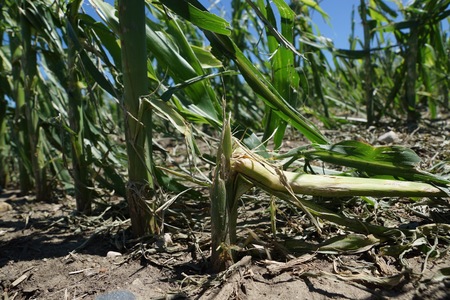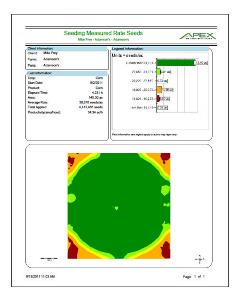Mega Menu
Mega menu is possible in BS5 but we will need to create a custom template layout for the navigation widget. The following is a hard-coded example.

Font Awesome 6
FA6+ icons will work on all widgets.
The FMH Icon box will need a new version created because the styling is broken in Bootstrap 5 templates (this has nothing to do with FA).
FMH Icon Widget
Icons can now be used in Content blocks by pasting the HTML tags from www.fontawesome.com into the HTML editor.
Here are some new icons from Font Awesome 6
face-awesome
envelopes
wheat-awn
Bootstrap Components
Code snippits from http://getbootstrap.com pasted into Content Blocks.
h1. Bootstrap heading
h2. Bootstrap heading
h3. Bootstrap heading
h4. Bootstrap heading
h5. Bootstrap heading
h6. Bootstrap heading
Nav Tabs
Nav Pills
Accordion
.accordion-body, though the transition does limit overflow.
.accordion-body, though the transition does limit overflow.
.accordion-body, though the transition does limit overflow.
Tables
| # | First | Last | Handle |
|---|---|---|---|
| 1 | Mark | Otto | @mdo |
| 2 | Jacob | Thornton | @fat |
| 3 | Larry the Bird | ||
Alerts
Image Carousel
Modals
Sitefinity Widgets
Default, out of the box, Bootstrap 5 templates available for widgets.
The navigation template used above is called Horizontal.
Navigation Widget - Tabs Template
Navigation Widget - Pills Template
Breadcrumb


List Widget - Expandable List Template
Precision Claims FAQs
List Widget - Simple List Template
Crop Claims Reminders
-
How To Report MPCI Claims
-
MPCI Claim Reporting Deadlines
-
Appraisals
-
Production Records by Unit
-
Production Delivered to a Commercial Elevator
-
Production From Precision Farming Technology Systems
-
Production Weighed and Farm Stored
-
Authorization for Load Records, Storage Structure Marking, or Combine Monitor Records
-
Fed Production
-
Quality Adjustment
-
What is a Simplified Claim?
-
What can insureds do to expedite the claim process?
List Widget - Anchor List Template
Quality Control Review FAQ
- What can an Insured do to prepare for a review?
- What can Agents do to prepare for a review?
- How does the review process begin?
Quality Control Review FAQ
What can an Insured do to prepare for a review?
Third party documentation (i.e. summary/settlement sheets from the elevator) is required when applicable and available. Insureds are expected to have available hard copy records that will 1) support the total production raised for the crop/county/year being reviewed and 2) that can demonstrate how production was kept separate between various units, practices and types (if applicable).
Insureds will also want make themselves available to meet with the quality control reviewer as the reviews will need to be completed before the claims can be processed.
What can Agents do to prepare for a review?
How does the review process begin?
Documents List - Documents List Template
Documents List - Documents List Template
| Title | Type | Size | |
| 602 KB | DownloadFMHQ Release 2 Guide | ||
| 405 KB | DownloadWFRP Checklist for Agents 2026 | ||
| 504 KB | DownloadWFRP Policy Provisions 2026 | ||
| 3231 KB | DownloadWFRP Handbook 2026 | ||
| 203 KB | DownloadECO_MCO_SCO_Coverage Comparison Flyer |
News Widget - News List Template
News list template is the only template available by default.
USDA Expands Crop Insurance Options, Provides Relief to Farmers Affected by Severe Weather
Actual Production History Yield Exclusion and Supplemental Coverage Option Broadened
 WASHINGTON, June 12, 2015 – The U. S. Department of Agriculture’s (USDA) Risk Management Agency (RMA) today announced the expansion of crop insurance options to provide relief to farmers affected by severe weather, including drought and excess moisture. Information made available today broadens options for farmers who elect the Supplemental Coverage Option (SCO) or the Actual Production History (APH) Yield Exclusion.
WASHINGTON, June 12, 2015 – The U. S. Department of Agriculture’s (USDA) Risk Management Agency (RMA) today announced the expansion of crop insurance options to provide relief to farmers affected by severe weather, including drought and excess moisture. Information made available today broadens options for farmers who elect the Supplemental Coverage Option (SCO) or the Actual Production History (APH) Yield Exclusion.
Producers also have access to new online tools designed to help them determine the options that work best for their operations. The Crop Insurance Decision Tool and the SCO/APH Yield Exclusion mapping tool, available on RMA’s website (www.rma.usda.gov), provide farmers with information on APH Yield Exclusion and SCO eligible crops, crop years, and counties where they may elect the programs.
“RMA worked hard to make these programs available for the 2015 crop year and we continue to expand these options for our farmers and ranchers for 2016,” said RMA Associate Administrator Michael Alston. “Providing APH Yield Exclusion for winter wheat in this expansion was a top priority.”
SCO is a county-level policy endorsement that covers a portion of the deductible of the underlying crop insurance policy. RMA is using yield data reported by insured producers, which allows SCO to be offered in more areas, and allows for more practice-specific insurance coverage to be offered.
SCO will now be available for alfalfa seed, canola, cultivated wild rice, dry peas, forage production, grass seed, mint, oats, onions, potatoes and rye in select counties for the 2016 crop year. It will also be expanded to additional counties for barely and winter wheat. SCO was first made available for the 2015 crop year for barley, corn, soybeans, cotton, cottonseed, rice, sorghum and wheat.
The APH Yield Exclusion allows farmers, with qualifying crops in eligible counties, to exclude low yields in exceptionally bad years (such as a year in which a natural disaster or other extreme weather occurs) from their production history when calculating yields used to establish their crop insurance coverage. Crop years are eligible when the average per planted acreage yield for the county was at least 50 percent below the simple average for the previous 10 consecutive crop years. It will allow eligible producers to receive a higher approved yield on their insurance policies through the federal crop insurance program.
Alfalfa seed, cultivated wild rice, dry peas, forage production, oats, onions, rye and winter wheat are eligible in certain counties for the 2016 crop year. These are in addition to barley, canola, corn, cotton, grain sorghum, peanuts, popcorn, rice, soybeans, sunflowers and spring wheat, which were offered beginning in the 2015 crop year.
Farmers and ranchers interested in learning how SCO and APH Yield Exclusion can help them better manage unforeseen risks can now find maps showing where the options are available, commodity fact sheets, frequently asked questions and policy information at RMA’s website, www.rma.usda.gov.
Blog Posts Widget - Blog Posts Lists Template
-
Reporting Acreage with FMH Precision Solutions
Many policyholders already collect precision ag data during planting. Put that data to work to report acreage for crop insurance with FMH Precision Solutions.Full story -
Prepping Your Customers for Planting with Precision
Help your farmers use the precision data they're already collecting to simplify planting and reporting this spring.Full story -
Q&A with an FMH Precision Tech Specialist
Learn how our expert staff supports agents getting started with Precision SolutionsFull story -
Traditional vs. Precision Claims: What Are the Differences?
Oct 16, 2023, 14:01 by Eric RicheLearn how Precision Solutions can lead to simplified claims and easier APH reviews for your customers.Full story -
See How Precision Solutions Saves Premium and Improves APH
See the difference with examples from our recent FieldView™ Partner Connect webinar.Full story



